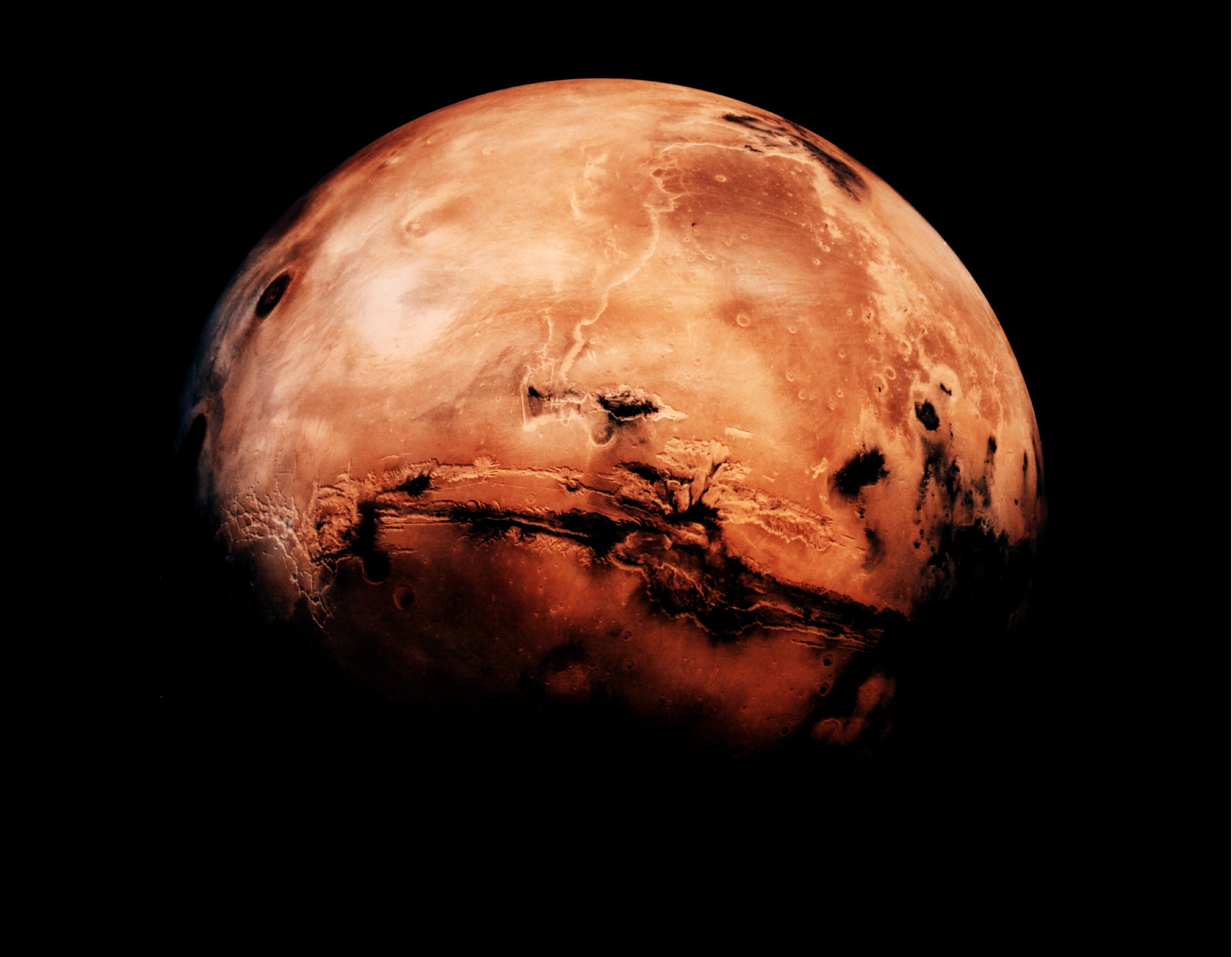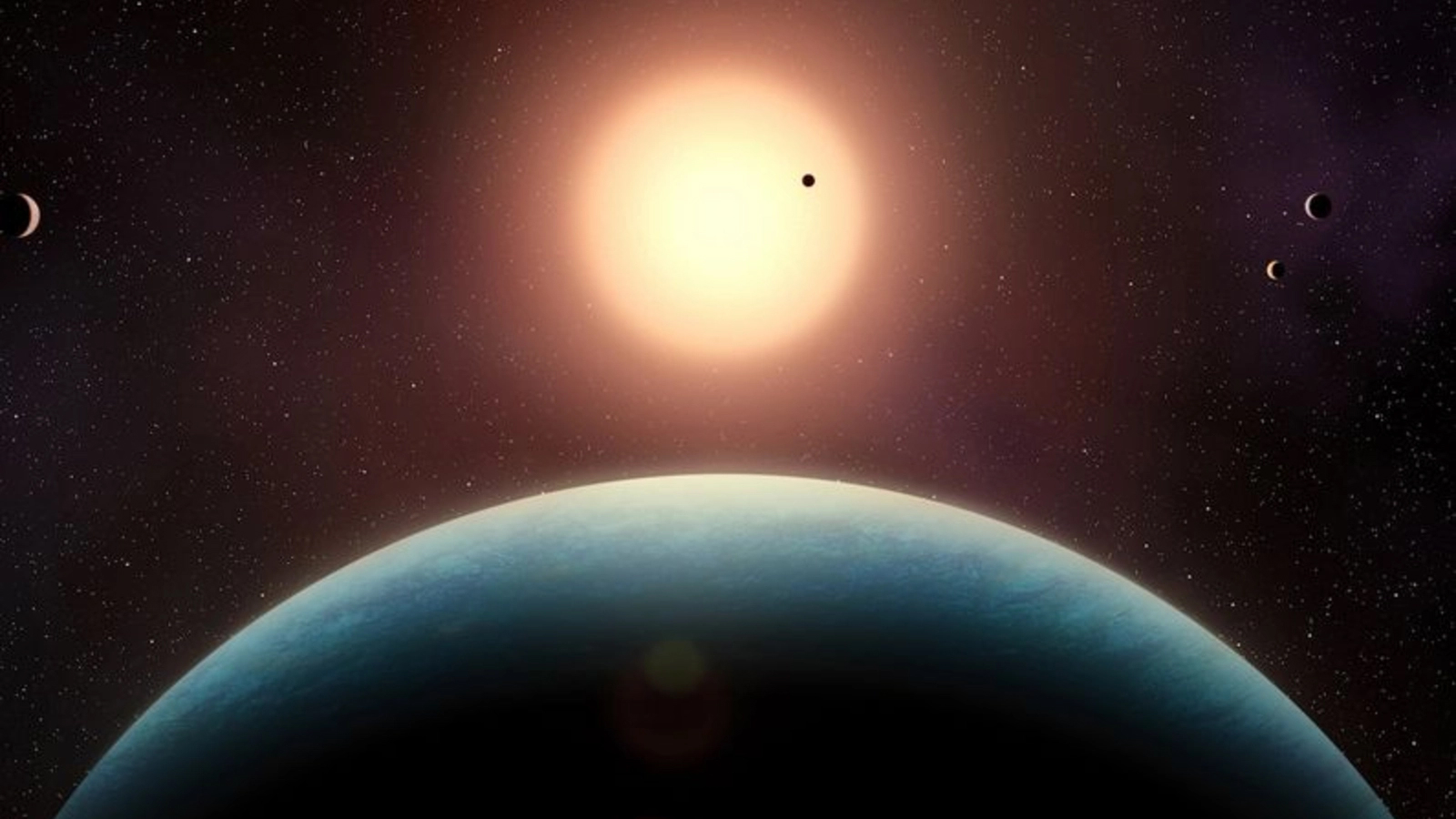Mars Will Soon 'Reverse Its Course' in the Sky

Look up this weekend to catch bright Mars as it begins a zigzag detour across the spring sky.
In just five and a half weeks, Mars will make its closest approach to Earth since August 2003. This week, we can see the Red Planet just before midnight, low in the east-southeast sky, almost matching Jupiter in brilliance and glowing like a yellowish-orange ember.
And Mars continues to brighten noticeably with each passing week. [Previewing 2018's Year of Spectacular Mars Using Mobile Apps]
If you have been following Mars since New Year's Day, you may recall that back then, it was shining in the zodiacal constellation of Libra, the scales. At that time, it was 181 million miles (292 million kilometers) from Earth. In contrast, by the end of next week, Mars' distance from Earth will have diminished to 42.3 million miles (68.2 million km); it now shines some 25 times brighter than it did at the start of this year.
Also since Jan. 1, Mars has progressed on an easterly course through the background stars of the zodiac. It currently resides in the zodiacal constellation of Capricornus, the sea goat.
But on June 28, that steady eastward course will come to a stop.
Actually, since the beginning of June, Mars has appeared to slow in its eastward trajectory, almost seeming to waver, as if it had become uncertain. Finally, on June 28, it will pause briefly. Then, for the next two months, it will reverse its course in the heavens and appear to move backward against the star background — toward the west.
Get the world’s most fascinating discoveries delivered straight to your inbox.
On Aug. 28, the planet will pause briefly again before resuming its normal eastward movement.
The Greeks were stumped; Copernicus wasn't
All of the planets in our solar system exhibit this "retrograde motion" at one time or another. But for the longest time, the ancient astronomers were unable to come up with a satisfactory explanation for it. For one thing, while behaving in this strange manner, Mars will also appear to deviate significantly from its normal course; the retrograde motion will appear to bring it far below its regular orbital track.
In other words, for those of us watching from Earth, during that two-month interval, Mars will appear to travel in a broad loop, measuring about 10 degrees long and 2 1/2 degrees wide. Yet the ancient Greeks staunchly believed that the sun, moon and planets all moved around the Earth in perfect circles. They had a great difficulty in representing and calculating this mysterious loop, and for a long time, they had no adequate explanation for it.
Another problem was trying to explain why Mars sometimes described a loop and other times a zigzag/back-and-forth motion, which resembled the letter "Z" in its path across the sky. In fact, it did just this during the spring of 2016 and will do so again in the late fall of 2022.
The Greeks finally explained away these anomalies by assuming that the planets moved around Earth in smaller "epicycles" — that is, small circles whose centers move along their main orbital circles around Earth, resulting in complex, almost coil-like curves. Unfortunately, the actual observations of the planets never seemed to fit this strange orbital mechanism, ultimately making the Greeks' explanation utterly useless.
It was not until 1543, when the great Polish astronomer Nicolaus Copernicus (1473-1543) had his lifelong work "De revolutionibus" published, that the secret of the odd retrograde loops were finally revealed. By demoting Earth from its hallowed position at the center of the solar system and replacing it with the sun, Copernicus was able to triumphantly explain the riddle of the apparent "backward motion effect" of the planets. [The Greatest Astronomers of All Time]
It's all an illusion
In fact, it's the same effect obtained when you pass another car on the highway: Both cars are going in the same direction, but one is moving more slowly. As they pass, the slower car will appear to be moving backward in relation to the faster one. Copernicus applied the same effect to the planets out in space. In the upcoming situation, both Earth and Mars are moving in the same direction around the sun, but the slower one — Mars — appears to move backward compared to the faster one, Earth.
Let's stress one thing here: Mars is not actually stopping or reversing its orbital path in space! What we are witnessing is merely an illusion based on perspective. Mars will continue to move in its regular elliptical orbit around the sun. What we are seeing — the stopping, the reversing of its path in the sky and the ultimate resumption of its regular path across the sky — is solely a function of viewing Mars from our Earthly perspective (just like when viewing the slower car from the perspective of the faster car) as we each travel through space in separate orbital paths at different speeds around the sun.
After Aug. 28, the movements of Earth and Mars will cancel out the apparent backward motion. Having spent more than half of this year trailing and ultimately catching up to Mars (like race cars "hot lapping" each other), Earth will eventually leave Mars far behind. The rapid increase in brightness for Mars we're seeing now will be reversed and, consequently, during the latter part of this year, will fade rapidly.
Editor's note: If you capture an awesome view of Mars and want to share it Space.com and our news partners for a story or gallery, send images and comments in to managing editor Tariq Malik at: spacephotos@space.com.
Joe Rao serves as an associate at New York's Hayden Planetarium. He writes about astronomy for Natural History magazine, the Farmer's Almanac and other publications, and he is also an on-camera meteorologist for FiOS1 News, based in Rye Brook, New York. Follow us @Spacedotcom, Facebook and Google+. Original article on Space.com.


